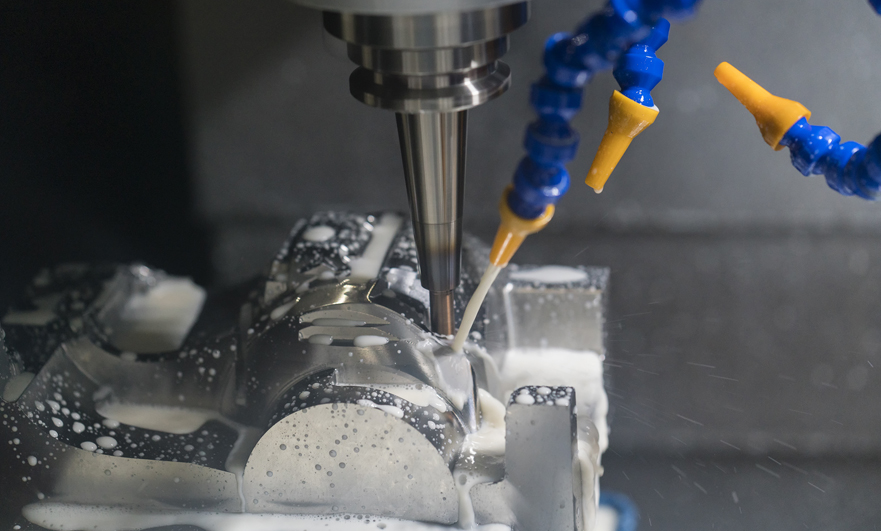15 years one-stop China custom CNC machining parts factory

Hey there I’m VMT Sam!
With 25 years of CNC machining experience we are committed to helping clients overcome 10000 complex part-processing challenges all to contribute to a better life through intelligent manufacturing. Contact us now
 235 |
Published by VMT at Sep 29 2021
235 |
Published by VMT at Sep 29 2021
CNC milling of stainless steel parts is widely used in manufacturing and other industries. It has attracted attention due to its excellent corrosion resistance and strength, and it has its presence in small parts of the medical industry to large construction industry buildings.
We are an ISO 9001:2015 CNC milling stainless steel parts service factory. We provide you with convenient processing services with a simplified supply chain. From DFM to processing inspection, we can provide a series of customized services for customers.
Advantages of CNC milling stainless steel parts service
Stainless steel is a metal based on iron-based alloys and contains at least about 11% chromium. It has the following advantages in common:
Corrosion resistance, product pollution prevention, oxidation resistance, easy manufacturing, excellent formability, beautiful appearance, easy to clean, high strength, light weight, good strength and toughness at low temperatures, and various product forms are available.
Types of stainless steel alloys:
303 stainless steel
303 stainless steel is an austenitic free-cutting stainless, wear-resistant acid steel. In order to improve the performance of the steel, no more than 0.60% of molybdenum can be added to the steel to resist ablation. Typical applications are parts that require machining, grinding or polishing, including shafts, gears, valves, bolts, and screws.
304 stainless steel
304 is a universal stainless steel, containing more than 18% chromium and more than 8% nickel; high temperature resistance of 800 ℃, good processing performance, high toughness characteristics, widely used in industry and furniture decoration industry and food and medical industry .
316 stainless steel
316 stainless steel is a magnetically resistant chromium-nickel alloy with excellent corrosion resistance. It can withstand exposure to harsh chemicals and marine environments. Common applications for this material are food preparation machinery, laboratory equipment, coastal panels, ship parts, chemical containers, heat exchangers, fasteners and springs.
410 stainless steel
410 stainless steel is a stainless steel grade produced in accordance with the American ASTM standard. It contains 11-1/2% chromium and has excellent wear resistance and corrosion resistance. Common applications include dental and surgical instruments, pipes, valves, nozzles, and automotive parts.
In addition, there are many CNC milled stainless steel parts, such as 420 stainless steel for dental and surgical instruments, pipes, valves, nozzles and auto parts, and 17 for pump shafts, oil field parts, mechanical seals and aerospace parts. -4PH stainless steel and so on.

Specific performance characteristics will vary from grade to grade, but they all have something in common.
Corrosion resistance has the same stiffness advantage as steel, but higher strength.
Unpainted CNC milled stainless steel parts are "passivated" with citric acid to remove any iron contamination that may appear as rust spots.
Surface treatment:
Powder coating, passivation, grain treatment
fastener:
Usually use stainless steel fasteners and PEMS
welding:
Highly weldable (unless wire drawing)
Precautions for CNC milling of stainless steel parts:
1. High cutting force and high cutting temperature
This type of material has high strength, large tangential stress and large plastic deformation during cutting, so the cutting force is large. In addition, the thermal conductivity of the material is extremely poor, causing the cutting temperature to rise, and the high temperature is often concentrated in the narrow area near the cutting edge of the tool, thereby accelerating the wear of the tool.
2. Severe hardening of CNC milling stainless steel parts
Austenitic stainless steel and some high-temperature alloy stainless steels are all austenitic structures, and the work hardening tendency is large during cutting, which is usually several times that of ordinary carbon steel. The tool is cut in the work hardening area, which shortens the tool life.
3. Easy to stick to the knife
Both austenitic stainless steel and martensitic stainless steel have the characteristics of strong chip toughness and high cutting temperature during processing. When the tough chips flow through the rake face, sticking phenomena such as adhesion and welding will occur, which will affect the surface roughness of the processed parts.
4. Accelerated tool wear
The above-mentioned materials generally contain high melting point elements, high plasticity, and high cutting temperature, which speed up tool wear, sharpen and change tools frequently, thereby affecting the production efficiency of CNC milling stainless steel parts and increasing the cost of tool use. Mainly to reduce the cutting linear speed and feed.
Summarize
Although there are many types of CNC milling stainless steel parts, they all have common performance advantages. There are more than 150 grades of stainless steel, and the specific performance characteristics will vary from grade to grade and used in different industries.
Ready To Start Your Next Project?
Get Instant Quote

Request a Free Quote
Send us a message if you have any questions or request a quote. We will get back to you ASAP!